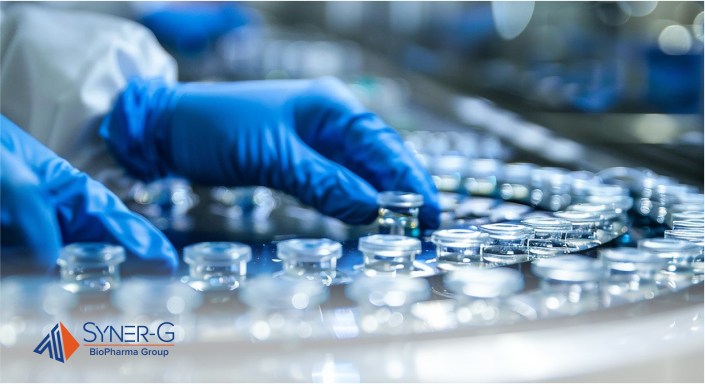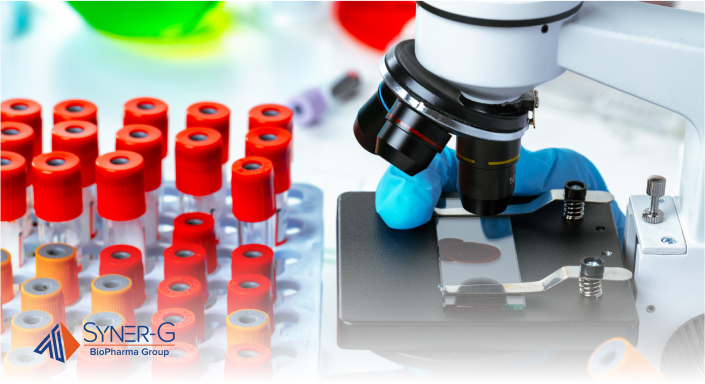Cell and gene therapy development has entered a transformative era, bringing unprecedented challenges and opportunities in Chemistry, Manufacturing, and Controls (CMC). As these revolutionary treatments progress from clinical trials to commercial manufacturing, the future of CMC in cell gene therapy development will be shaped by the industry’s ability to meet complex demands for scalability, reproducibility, and regulatory compliance.
The convergence of advanced technologies, automated systems, and regulatory evolution is reshaping how these sophisticated therapeutics are developed and manufactured, marking a critical turning point in the advancement of personalized medicine.

The Evolution of CMC Requirements
Chemistry, Manufacturing, and Controls (CMC) in cell and gene therapy development has transformed dramatically over the past decade. Initially, CMC guidelines were adapted from traditional biologics, proving insufficient for these complex modalities. Today’s standards demand comprehensive characterization of critical quality attributes (CQAs) and robust process controls specific to cell and gene therapies.
The FDA’s 2020 guidance on chemistry, manufacturing, and control information for human gene therapy INDs marked a pivotal shift, establishing clearer expectations for developers. This was followed by the EMA’s guidelines on quality, non-clinical, and clinical aspects of medicinal products containing genetically modified cells in 2021. These milestones introduced requirements for enhanced viral vector characterization, stringent raw material controls, and detailed validation of analytical methods.
Development timelines have lengthened significantly due to these evolving requirements. What once took 12-18 months now typically requires 24-36 months from process development to IND filing.
Key factors include:
- Extended stability studies for viral vectors and cell products
- More complex analytical method validation requirements
- Increased focus on comparability studies during process changes
- Additional characterization requirements for starting materials
However, these extended timelines have led to more robust processes and improved product understanding, ultimately benefiting patient safety and therapeutic efficacy. Companies are now implementing platform approaches and automated systems to streamline CMC development while maintaining regulatory compliance.
The regulatory framework continues to evolve, with agencies increasingly emphasizing risk-based approaches and encouraging early engagement through INTERACT meetings and scientific advice consultations.

Critical CMC Considerations
Cell and gene therapy CMC development requires meticulous attention to quality, safety, and consistency. The following critical considerations shape the success of these advanced therapeutic products.
Raw Material Control
The foundation of successful cell and gene therapy manufacturing lies in sophisticated raw material control. Organizations must navigate complex supply chains while maintaining stringent quality standards. This involves developing comprehensive vendor qualification programs and implementing strategic dual-sourcing approaches for critical materials.
Modern quality specifications extend beyond traditional chemical testing to encompass biological properties, particularly focusing on adventitious agent testing for biological materials. Forward-thinking companies are leveraging digital tracking systems and predictive analytics to maintain real-time supply chain visibility and proactively address potential disruptions.
Manufacturing Process Development
As cell and gene therapies move toward commercialization, manufacturers face the delicate balance of scaling production while preserving product quality. This challenge has driven innovation in process automation and control strategies.
Closed-system operations and integrated monitoring capabilities now allow for unprecedented process consistency.
The industry continues to evolve with emerging technologies, such as perfusion-based production systems and modular manufacturing platforms, offering both flexibility and efficiency while maintaining product integrity throughout the manufacturing journey.
Product Characterization
The unique nature of cell and gene therapy products demands sophisticated characterization methods that evolve alongside technological capabilities.
Today’s analytical landscape combines traditional approaches with cutting-edge techniques like multiparameter analysis and next-generation sequencing.
Understanding product stability has become increasingly nuanced, encompassing not only standard temperature studies but also container closure integrity and product-specific degradation pathways.
Furthermore, potency assay development requires deep mechanistic understanding and careful correlation with clinical outcomes, ensuring that analytical methods accurately reflect therapeutic potential.

Emerging Technologies Transforming CMC
Innovation in bioprocessing technology continues to revolutionize CMC development for cell and gene therapies. These emerging solutions promise greater efficiency, reproducibility, and product quality.
Artificial intelligence and machine learning are revolutionizing process development through predictive modeling and real-time optimization. These technologies analyze vast datasets from manufacturing runs to identify critical process parameters and predict optimal conditions. Advanced algorithms now help manufacturers adjust process parameters in real time, reducing batch-to-batch variability and increasing yields.
Single-use technologies have become instrumental in modern cell and gene therapy manufacturing. These systems offer enhanced flexibility, reduced contamination risks, and simplified validation requirements.
The transition from stainless steel to disposable components has dramatically reduced turnover times between batches while improving process economics. Manufacturers increasingly adopt integrated single-use platforms that seamlessly connect multiple unit operations.
Continuous manufacturing represents a paradigm shift from traditional batch processing. This approach enables consistent product quality through steady-state operations and real-time monitoring. Perfusion-based systems support higher cell densities and improved product quality, while integrated continuous purification strategies reduce processing time and increase facility utilization.
Real-time release testing is transforming traditional quality control approaches. Advanced analytical technologies, coupled with process analytical technology (PAT), enable manufacturers to monitor critical quality attributes throughout production. This shift from conventional end-product testing to continuous monitoring accelerates batch release while maintaining rigorous quality standards.
Integration of spectroscopic methods and automated sampling systems provides immediate feedback on product quality, allowing for rapid decision-making during manufacturing.
Quality Control Strategies
The landscape of quality control in cell and gene therapy manufacturing has transformed dramatically, driven by technological advances that prioritize speed without compromising safety. Modern release testing leverages high-throughput sequencing and multiplexed analysis, providing comprehensive quality data while slashing traditional timelines. This integration of advanced analytics gives manufacturers unprecedented visibility into their products’ critical quality attributes.
The revolution in microbial testing exemplifies this progress. Advanced molecular and spectroscopic techniques have replaced time-consuming culture methods, reducing detection times from weeks to hours. This acceleration maintains rigorous safety standards while aligning with the unique demands of cell and gene therapy production timelines.
Digital quality systems now form an interconnected ecosystem of data and analytics. These platforms seamlessly integrate batch records, deviations, and trending analysis, enabling quality teams to spot patterns and address potential issues before they impact production. Real-time access to quality data has transformed decision-making from reactive to proactive, fundamentally changing how manufacturers approach quality control.
Process analytical technology (PAT) completes this quality ecosystem by providing continuous, real-time monitoring throughout production. By integrating spectroscopic methods with automated controls, manufacturers can detect and respond instantly to process variations. This approach not only ensures consistent product quality but also supports streamlined batch release, helping meet the growing demand for cell and gene therapies while maintaining the highest quality standards.
Future Outlook
As cell and gene therapy manufacturing evolves, transformative technologies and innovative approaches are reshaping the CMC landscape. The convergence of artificial intelligence, automation, and advanced analytics is creating unprecedented opportunities for process optimization and control.
Industry Evolution
Smart manufacturing facilities are becoming a reality, with AI-driven systems optimizing processes in real time while reducing human intervention. These intelligent platforms generate valuable data insights that inform future development programs and accelerate process understanding.
Cloud-based solutions enable seamless monitoring across global manufacturing networks, while digital twin technology allows precise process modeling before physical implementation.
Technology Integration
The marriage of advanced analytics with manufacturing systems is streamlining operations across the value chain. Real-time monitoring capabilities, coupled with predictive maintenance systems, are reducing downtime and enhancing process reliability. Modern facilities leverage integrated platforms that connect everything from raw material management to final product release, creating a digital thread throughout the manufacturing process.
Cost Optimization
The industry’s focus on accessibility is driving innovative approaches to cost reduction. Automated cell processing platforms, optimized media formulations, and simplified purification strategies are reducing production costs while maintaining quality.
Standardized platforms and modular manufacturing approaches enable economies of scale, making these transformative therapies more commercially viable.
Timeline Acceleration
Parallel processing approaches and improved analytical methods are revolutionizing development timelines. Advanced in-process controls and real-time release testing are shortening batch release times, while integrated quality systems reduce the documentation burden.
These improvements, supported by regulatory agency acceptance of innovative approaches, are accelerating the path from development to patient access.
Shaping Tomorrow’s Cell and Gene Therapy Landscape
The future of CMC in cell and gene therapy development stands at an exciting crossroads of innovation and opportunity. Advanced technologies like AI-driven manufacturing, integrated quality systems, and continuous processing are revolutionizing how these complex therapeutics are developed and produced.
As regulatory frameworks evolve and cost optimization strategies mature, these groundbreaking treatments are becoming increasingly accessible to patients worldwide, marking a new era in personalized medicine.

